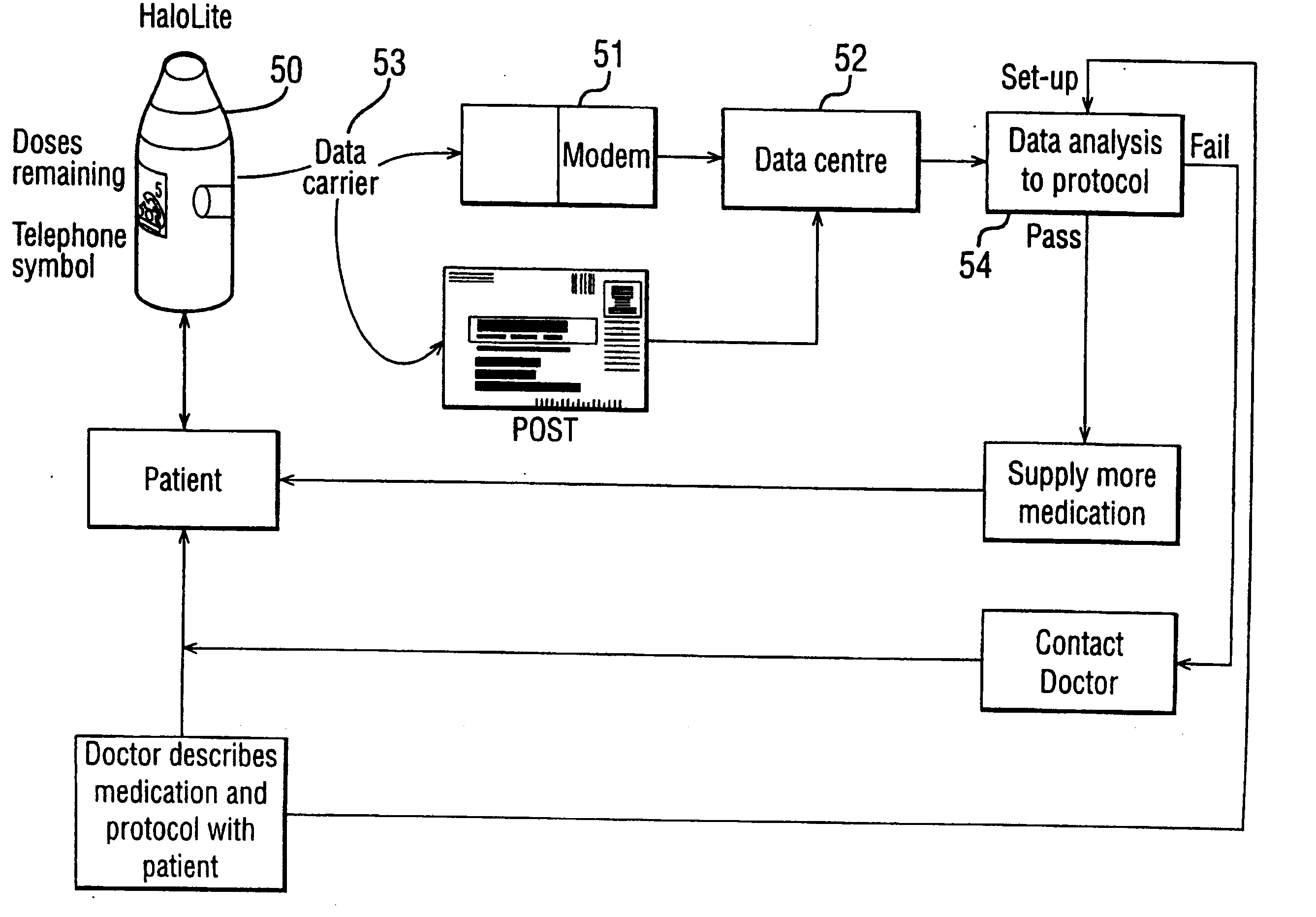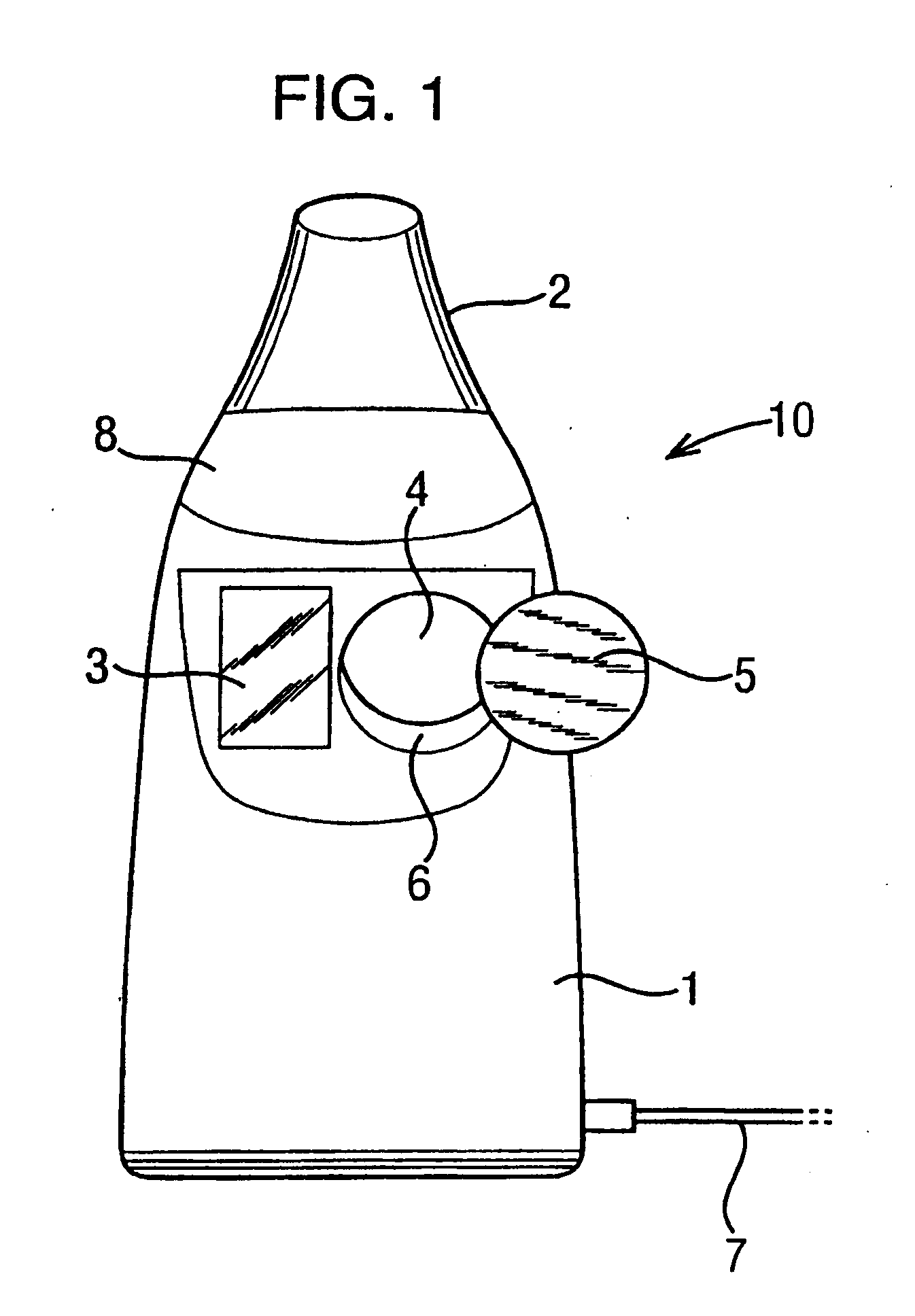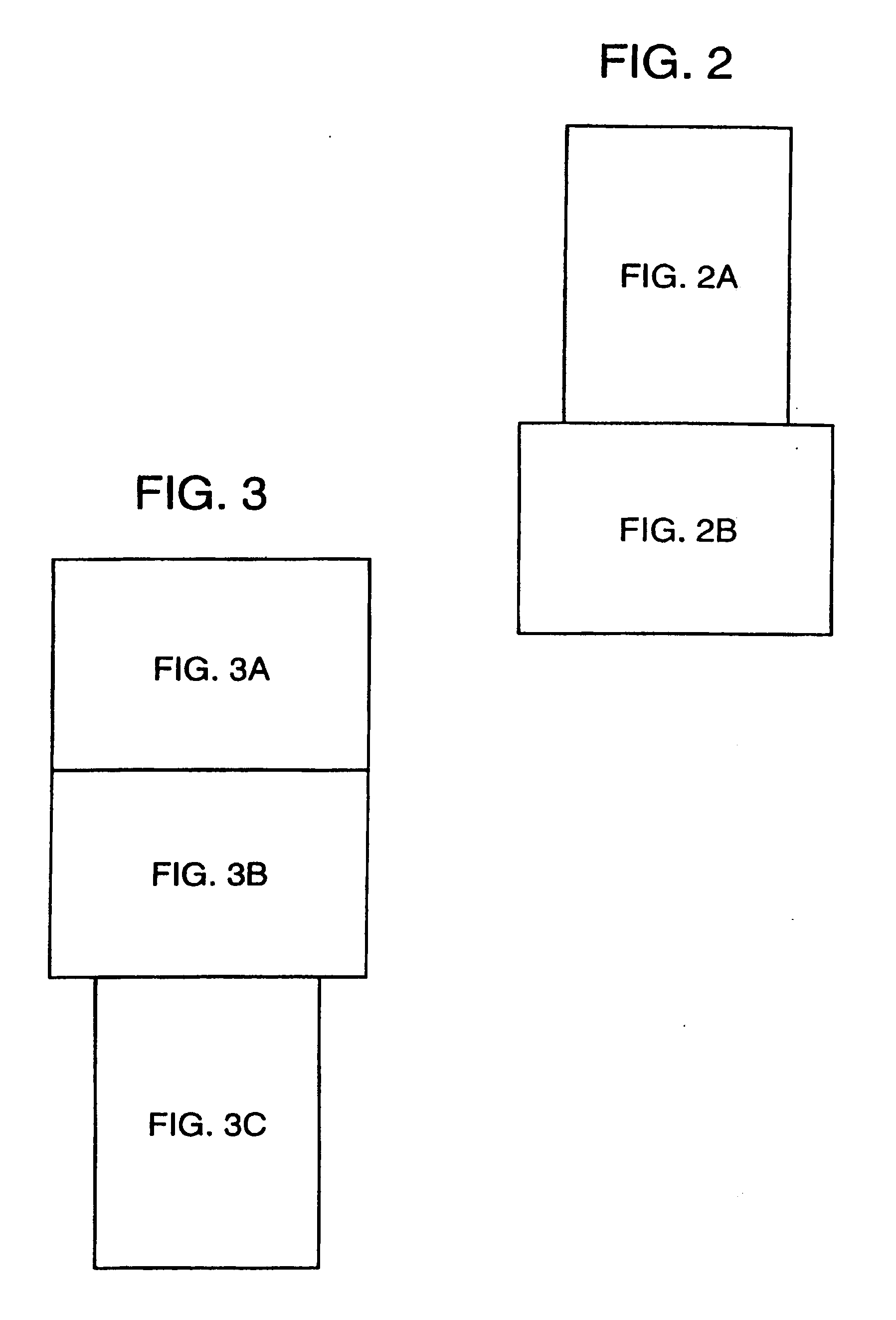Controlling Drug Delivery Apparatus
a drug delivery and control technology, applied in the direction of computer-aided medicine prescription/delivery, coin-freed apparatus, packaging goods, etc., can solve the problems of drug exhaustion from the lungs, single treatment takes several minutes to deliver, and no guarantee of the patient receiving the required dose in his or her lungs, so as to reduce regulatory submissions and save scale
- Summary
- Abstract
- Description
- Claims
- Application Information
AI Technical Summary
Benefits of technology
Problems solved by technology
Method used
Image
Examples
Embodiment Construction
[0047] Referring to FIG. 1, a nebulizer 10 is shown including a body 1 and a mouthpiece 2 through which a patient breathes to receive an atomized drug during inhalation. In addition, the nebulizer 10 includes a display 3 for displaying information concerning the use of the machine and the treatment being delivered, and an input 4 in the form of a receptive region in which a data carrier in the form of a button 5 may be placed in order to transmit information concerning the treatment into the device 10.
[0048] The nebulizer 10 delivers a drug to a patient in his or her inhaled air stream. The drug is supplied in a package (not shown) including a number of individual containers or vials, each one for use in a separate treatment. Enough vials are supplied for a course of treatments of, typically, one month. The package is supplied with a data carrier 5 inside, or attached to the outside of the package, and the treatment information contained therein relates to the delivery of the drug ...
PUM
 Login to View More
Login to View More Abstract
Description
Claims
Application Information
 Login to View More
Login to View More - R&D
- Intellectual Property
- Life Sciences
- Materials
- Tech Scout
- Unparalleled Data Quality
- Higher Quality Content
- 60% Fewer Hallucinations
Browse by: Latest US Patents, China's latest patents, Technical Efficacy Thesaurus, Application Domain, Technology Topic, Popular Technical Reports.
© 2025 PatSnap. All rights reserved.Legal|Privacy policy|Modern Slavery Act Transparency Statement|Sitemap|About US| Contact US: help@patsnap.com



